Environmental Monitoring Research Project
Although I've written a lot about what it is like here in Antarctica, I haven't formally introduced the research team I am working with or why we are here! I will be stationed out of McMurdo station until mid-December working with a research group from Texas A&M University studying environmental monitoring here at the station. In the 1950s and 60s when scientists first arrived here, they were not as careful about spills and pollution as the community here is today. My research team has been coming to McMurdo for years (the project is in the 12th year of its study) studying the health of the ecosystem at locations that were polluted in the 1950s and 60s to see how the ecosystem is changing. They are also comparing these ecosystems with control sites--places where there is no evidence of past pollution. This involves diving to locations and collecting sediment as well as collecting soil on the surfaces above ground.
The team has a blog as well which they take turns writing. You can check it out at: www.islandtoice.org
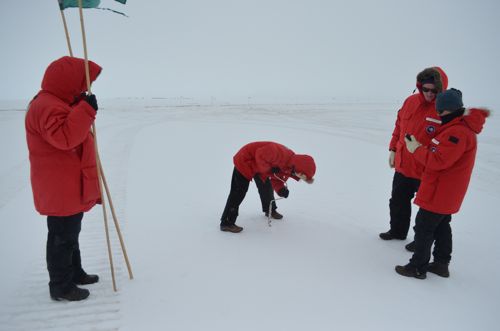
There are four people working on this research project (besides me), as well as a diver who is helping us collect samples. While we were in a dive hut today waiting for the divers to finish their practice dive, I asked the researchers some questions:
Meet Andrew Klein
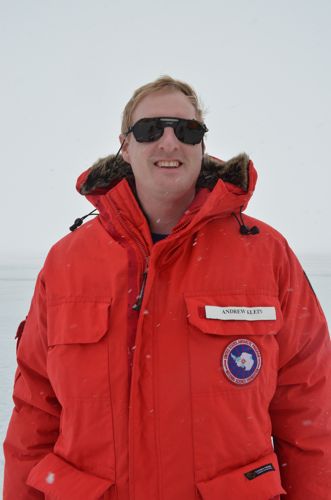
Andrew grew up surviving the harsh winters of Iowa. He likes playing basketball and has a black, fluffy dog named Onyx.
Question: What is your role in the research team?
Answer: My role is to be the brunt of all jokes. (Just kidding). I am the team leader and analyst. I determine where we are going to do soil sampling. I also use GIS and GPSA Global Positioning System (GPS) is a satellite-based navigation system used to track the location or position of objects on the Earth’s surface. to do the mapping of our data.
Question: What made you interested in science?
Answer: I was always interested in science. When I was a sophomore in college, I got involved in a remote sensing project about the Ellsworth Mountains in Antarctica. (Remote sensing is when you use satellites to collect data about a place without actually going there.) I worked with researchers who did work in Antarctica in the 1960s. They gave me the opportunity to go to Washington University to work as a visiting undergraduate. This got me interested in GIS and as a graduated student I was able to work in the Andes doing GIS work.
Question: How many times have you gone to Antarctica?
Answer: I have been to Antarctica 12 times.
Question: What is your most memorable experience in Antarctica?
Answer: Going to Cape Bird is one of my most memorable experiences. I was able to see all the penguins there. I also was able to see Shakleton's historic hut at Cape Roids, which was memorable. Seeing the dry valleys in Antarctica (where there is no snow) was also interesting.
Meet Steve Sweet
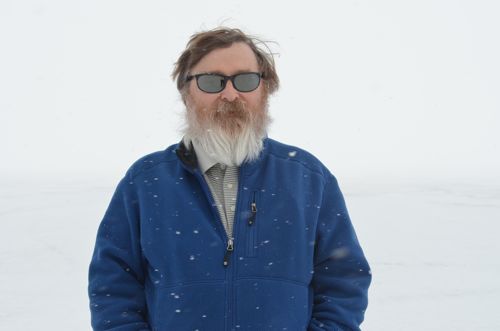
Steve hails from Connecticut. He has a summer home in upstate New York on the Thousand Islands and has a kitty cat named Kalen.
Question: What is your role in the research team?
Answer: My role on the research team is to provide comic relief. (just kidding). I, along with my colleagues back in College Station, do the chemical analysis of the sediments, soils, and tissues of the marine organisms that we collect. We are looking for traces of hydrocarbons, which is evidence of fuel spills, or trace metals, which is evidence of other types of spills.
Question: What made you interested in science?
Answer: I've liked science since I was a kid. My father was a chemist and would explain science concepts to me. Mr. Beebe, my physics teacher and also my crew coach, also inspired me to like science.
Question: How many times have you gone to Antarctica?
Answer: I've been to Antarctica a dozen times or so.
Question: What is your most memorable experience in Antarctica?
Answer: The most memorable experience I've had is when I was in a zodiac (an inflatable rubber boat) at Palmer Station, and a couple Adeli penguins jumped into the zodiac to escape a leopard seal.
Meet Joni Kincaid
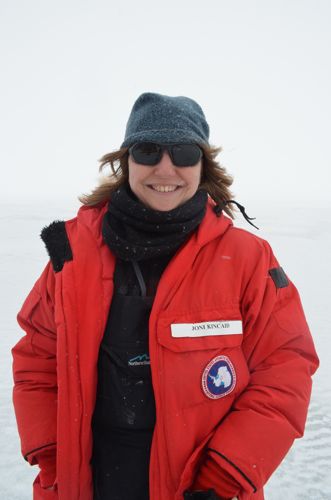
Joni is originally from Tennessee, but she moved around a lot growing up--she went to 25 schools in the South from grades 1 - 12! In high school she was on the dance team and twirled the baton as a majorette. After selling real estate and raising children as a single mom, she decided to go back to graduate school and pursue her love of science.
Question: What is your role in the research team?
Answer: I am the graduate student of Andrew Klein. My job here is to assist and support GIS and spatial analysis. (GIS is the ability to take data about a geographic place and use it to create maps.)
Question: What made you interested in science?
Answer: My senior year of high school I took an advanced placement biology class. We were able to go to a medical school in Houston on a field trip and look at cadavers. That made me interested in medicine. Then I took a Physics class in my first year of college and I fell in love with it. I knew I wanted to be a scientist.
Question: How many times have you gone to Antarctica?
Answer: This is my first time in Antarctica!
Question: What other research have you done?
Answer: I research the glaciers in the Andes Mountains in Bolivia. I'm trying to determine how much water is in the glaciers and how quickly they are receding. This is important so that city planners can plan for their water resources because they are dependent on water.
Meet Terry Palmer
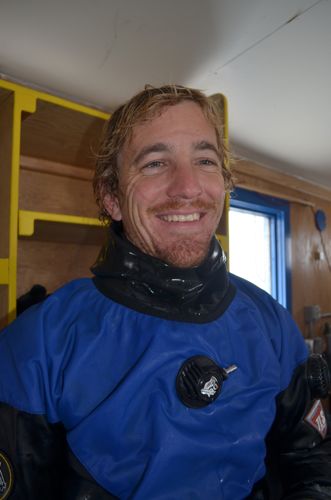
Terry grew up in Papamoa, New Zealand. He has a wife, Sally, and a one and a half year old daughter named Scarlett (you can see his family here ). When not diving in icy waters, Terry likes to surf, snorkel, spearfish and play rugby.
Question: What is your role in the research team?
Answer: I am the team diver, and I also work with the marine organisms that are along the sea floor. I am a research associate at Texas A&M's Harte Research Institute in Corpus Christi.
Question: What made you interested in science?
Answer: I always liked the beach and the ocean. The ocean captivated me and I lived by the ocean growing up. I was also good at science so it was a natural field to fall into.
Question: How many times have you gone to Antarctica?
Answer: This is my 8th time in Antarctica.
Question: What is your most memorable experience in Antarctica?
Answer: Stepping off the plane for the first time was memorable for me. It was a surreal event and it took my breath away both literally and figuratively! It was a really meaningful memory to me.
Meet Steve Rupp
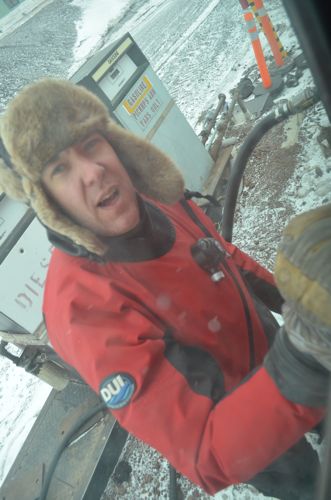
Steve Rupp is a diver who works for Raytheon Polar Services, but who will be helping us out to collect samples. He has dived under the icy waters for years in Antarctica, and grew up wanting to do nothing else!
Questions
What would you like to study in college or as an adult?
What made you interested in the subject? Was there a person or event that changed your life?
Math Connections
- Steve and Andrew have been to Antarctica 12 times. Terry has been to Antarctica 8 times. This is Joni and Michelle's first time to go to Antarctica.
a. What is the mean number of times the research team has gone to Antarctica?
b. What is the mode for the number of times the research team has gone to Antarctica?
c. What is the median for the number of times the research team has gone to Antarctica?

Comments